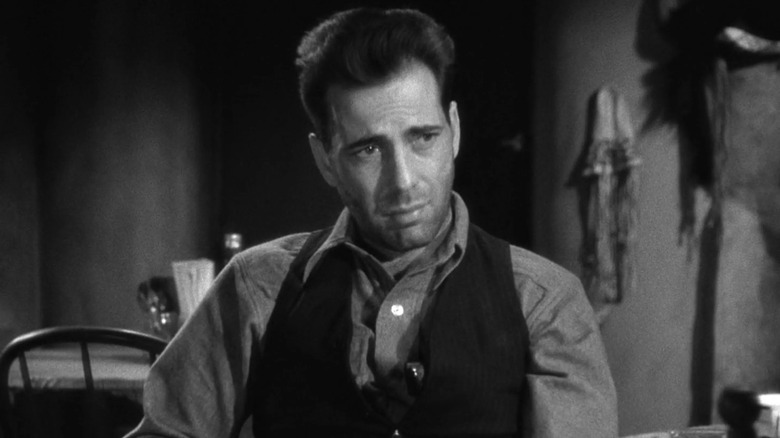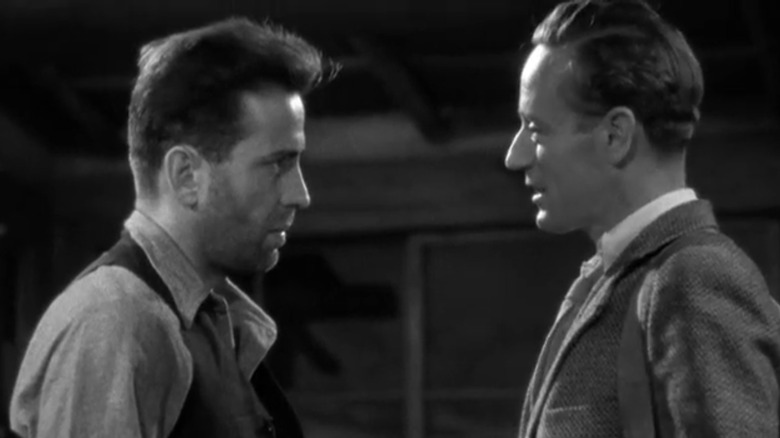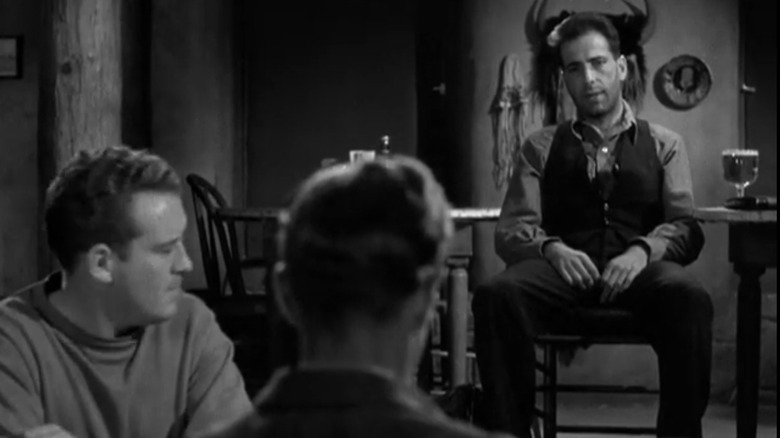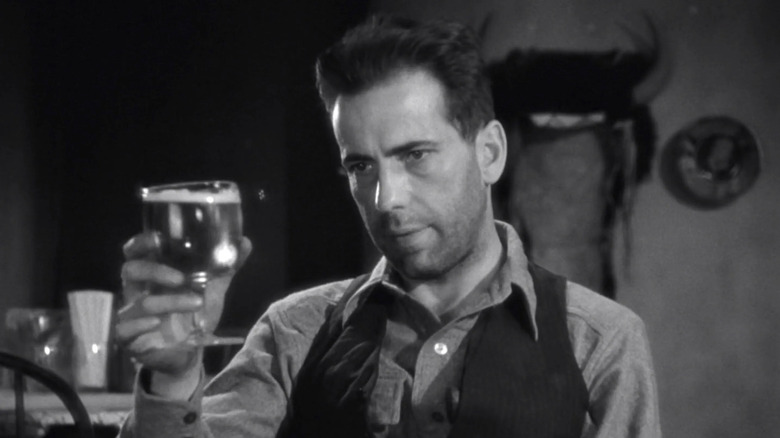How A Broadway Play Saved Humphrey Bogart's Hollywood Career
Looking back from the 21st century, it's hard to see Humphrey Bogart as anything less than a skilled, accomplished actor. With such a wide body of influential work, it's no surprise that Bogart has made a lasting impact and inspired the next generation of actors. But things didn't always look so good for the suave actor, especially when he was just starting out.
Despite the myriad of successes that Bogart would later experience on the big screen, the actor got his start on Broadway, working on plays like "Meet the Wife" and "Invitation to a Murder." Though he worked on a few films during this time, the majority of Bogart's early success (and likely, his early income) came from stage work. However, the sudden onset of heavy debts would soon put the actor under considerable stress, significantly jeopardizing his career.
Bogart's father, Belmont Bogart, passed away in 1934, a very difficult situation under any circumstances. Unfortunately, Belmont Bogart experienced money troubles near the end of his life, leaving his son with roughly $10,000 in debt. Despite the actor's relative success, this was no small sum, and according to the biography "Tough Without a Gun" by Stefan Kanfer, it led him deep into despair:
"The more Humphrey thought about the money he owed, the sadder he got. And the sadder he got, the more he imbibed. His wife and friends worried about him because he had assumed a quiet, fatalistic air, as if the dying man was going to be his next role."
Of course, the alcohol would likely lead to a negative spiral — making it difficult to work, the debts weighing more heavily, stress piling up, and so on. It was important that Bogart find some way to break the cycle as soon as possible, ideally keeping the situation from becoming too dire.
Friendship saves the day
According to the biography, Bogart's friend Robert Emmet Sherwood was particularly troubled by the actor's drinking. Sherwood decided to give Bogart another shot by putting in a good word with a producer who was in the process of putting together "The Petrified Forest," a play which was in need of a host of small characters.
As it turned out, not only did Bogart get a role in "The Petrified Forest," but he was cast as the play's wild, escaped convict, a substantial role that was perfect for a man already experiencing feelings of desperation. When the play opened, Bogart stole the stage. As Kafner wrote:
"When Duke made his first entrance there were audible gasps, in part because he was so dark and menacing, in part because John Dillinger, America's most wanted fugitive, had recently escaped from jail. The real-life gangster seemed, in the play's edgiest moments, to have materialized onstage. Humphrey Bogart, the eternal upper-class twit, had turned himself into the new villain du jour, and the play's strongest attraction."
The play had a long, successful run, providing Bogart with a relatively stable source of income that he could use to make payments towards his debts. But better than that, it also provided a launchpad for what would soon become a lucrative Hollywood career, and it helped to set the actor up for the tough, cool roles he would later become known for).
The Petrified Forest also made for a great movie
They say that all good things must end, and such was the case for the Broadway run of "The Petrified Forest." But the play was so popular that it was turned into a movie under the same title that was released in 1936, thus boosting Humphrey Bogart's reputation. However, Bogart could not be bothered to follow the title to television.
The film version of "The Petrified Forest" had a warm reception, even being named in Screen Guilds Magazine as the "Best Screen Play of February." Bogart's charm was not lost on moviegoers, either, as a profile on the actor published in the August 1936-January 1937 edition of Motion Picture proudly announced that "Humphrey Bogart is going places since The Petrified Forest," a claim that would ring all the more true over the next few years as the actor began to appear in more and more Warner Brothers pictures.
As Kanfer's biography notes, by the early 1940s, he'd be starring in classics like "The Maltese Falcon" and "Casablanca" — and by 1946, Bogart would secure a 15-year contract that officially made him the highest paid actor in the world.
Bogart never forgot his roots
Given his widespread success, it certainly would have been easy for Bogart to become cocky and assume that he was predestined to be a star. Yet the actor remained humble, fully acknowledging that he likely wouldn't have made it if it weren't for "The Petrified Forest." According to "Tough Without a Gun," Bogart provided the following reflection around the time of his 1946 contract renewal:
"I believe if I had not been given the movie role of Duke Mantee, in 'The Petrified Forest', I'd now be out of films altogether. Duke was my first heavy role, and I like heavies, having no desire to be sympathetic or romantic."
Of course, despite Bogart's apprehension towards romantic roles, many of his so-called heavies did involve romantic storylines, even if they were just subplots. One film — "To Have and Have Not" — even led to a 12-year marriage and enduring on-stage partnership with Lauren Bacall, his co-star. That being said, it's still refreshing to see how much Bogart valued what was initially meant to be a small role in "The Petrified Forest" — a role that transformed him from a melancholic, indebted, struggling actor into one of Old Hollywood's most successful stars.



